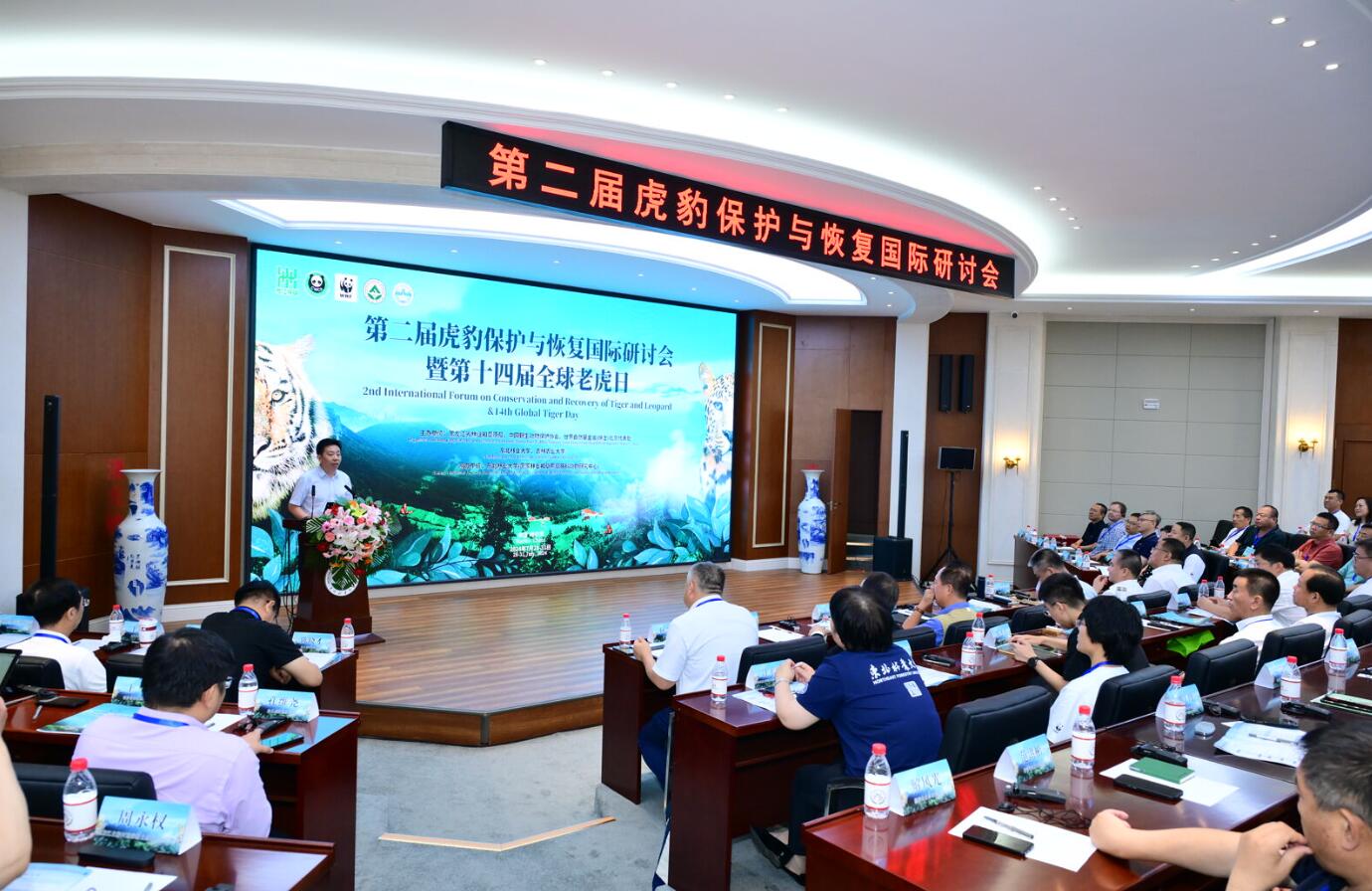On July 29, marking the 14th Global Tiger Day, over 140 representatives and experts from more than ten countries gathered at NEFU for the Second International Symposium on Tiger and Leopard Conservation and Restoration, which was held alongside the Global Tiger Day event. The symposium featured in-depth discussions on managing tiger and leopard populations and their habitats, mitigating human-wildlife conflicts, and restoring prey and habitats. The "Harbin Initiative on Strengthening Tiger and Leopard Conservation and Restoration" was officially released during the event.
This symposium was co-organized by the Heilongjiang Forestry and Grassland Bureau, the China Wildlife Conservation Association, the World Wildlife Fund for Nature (WWF) Beijing Office, Northeast Forestry University, and Jilin Agricultural University, with NEFU serving as the host.
The symposium reviewed the efforts, progress, and achievements in tiger and leopard conservation worldwide over the past decade. In-depth discussions were held on managing tiger and leopard populations and their habitats, mitigating human-wildlife conflicts, and restoring prey and habitats.
Thanks to over a decade of conservation efforts, the global wild tiger population has increased from around 3,200 in 2010 to approximately 5,500. Countries such as China, Russia, India, and Nepal have seen significant growth in their wild tiger populations.
Duan Zhaogang, Director of the Northeast Tiger and Leopard National Park Administration, emphasized that restoring the Northeast tiger and leopard populations and their habitats has been the administration's primary goal since its establishment. Since 2017, the park has implemented regular anti-poaching patrols and other particular actions, systematically restored habitats, cleared migration corridors, integrated "sky-ground" monitoring systems, and implemented policies to return farmland and ginseng fields to forests. These measures have significantly protected the Northeast tigers and leopards and their habitats. As a result, the wild Northeast tiger population in the park has grown from around 50 to about 70, and the Northeast leopard population has increased from around 60 to approximately 80.
Zhou Fei, Deputy Secretary-General of the WWF Beijing Office, stated that the World Wildlife Fund for Nature will continue to support critical actions for tiger and leopard conservation. This includes effectively managing and protecting the most vital habitats for these big cats, ensuring habitat connectivity, managing human-wildlife conflicts, and carrying out anti-poaching activities.
Liu Shouxin, a member of the Party Committee and Vice President of NEFU emphasized that Northeast Forestry University is the birthplace of wildlife conservation studies in China and has trained numerous professionals in the field. He hoped this international symposium would attract top scholars worldwide and contribute to the scientific conservation of Northeast tigers and leopards.

The symposium concluded with the adoption of the "Harbin Initiative on Strengthening Tiger and Leopard Conservation and Restoration," which outlines several vital actions: enhancing the protection and connectivity of tiger and leopard habitats; improving mechanisms for information sharing and communication; strengthening the capacity of grassroots law enforcement agencies to maintain the integrity of tiger and leopard populations and their habitats; advancing foundational scientific research on these species and applying new technologies to reduce human-tiger-leopard conflicts and improve conservation outcomes gradually; and fostering collaboration with businesses, social organizations, research institutions, international organizations, and NGOs. The initiative also calls for widespread public ecological education, volunteer services, and applied scientific research to encourage broader public participation in tiger and leopard conservation efforts.